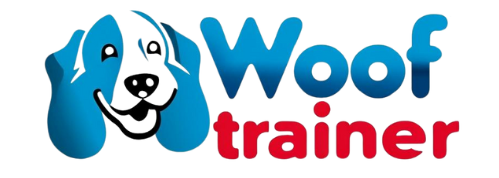The Daily Feeding Nightmare
6 AM. You drag your tired body toward the kennel, carrying the breakfast you’ve carefully prepared for your beloved dog.
Your German Shepherd Max wags his tail excitedly, his nose already pressing against the food bowl. The moment you pour in the kibble, the entire Lucky Dog® feeder starts shaking violently. With the harsh clang of metal on metal, half the food and water spills across the floor.
You let out a deep sigh. This is the third time this week.
I know exactly how you feel, because in my 12 years as a professional dog trainer, I’ve seen too many owners experience this same frustration. That clamp-on feeder that looked so “convenient and no-cutting required” has now become your daily source of irritation.
It’s Not Just About Spilled Kibble
Let me be blunt—every time you clean up that spilled food, you’re actually paying for three things:
- You’re hemorrhaging money.
That premium dog food at $40 a bag is now mixed with dust on the floor. At three spills per week, you’re literally throwing away hundreds of dollars worth of food each year. - You’re putting your dog’s health at risk.
Spilled food and water create a damp environment on the kennel floor—a bacterial paradise. According to the American Veterinary Medical Association (AVMA), moisture in kennels is a leading cause of bacterial skin infections. I once had a client whose dog developed a severe skin infection from this, with treatment costs exceeding $800. - You’re inadvertently training your dog to be worse.
This is the part that worries me most.
You’re Turning the Feeder Into Your Dog’s “Slot Machine”
As a professional dog trainer, I need to tell you a harsh truth: an unstable feeder is sabotaging your training efforts.
Picture this: Every time Max pushes hard against the bowl, a few pieces of kibble occasionally fall out. In your dog’s brain, this is like playing a slot machine—”Maybe if I push harder next time, more food will come out!”
This intermittent reinforcement is one of the hardest behavioral issues to correct in animal psychology. You bought a feeder to make life easier, but instead you’ve inadvertently created a more destructive dog.
The Physics Failure of Clamp-On Design
“Is my dog just too rambunctious?”
No, the problem lies in the design itself.
Let me give you a simple physics explanation: A clamp-mounted system is like using a paperclip to hang an oil painting. It might work for a stationary object, but when a 70-pound German Shepherd impacts it daily? That’s a different story.
A large dog’s neck can generate over 200 pounds of instantaneous force. Lucky Dog and similar products rely solely on a single pivot point and clamp mounting—every impact gets amplified into violent shaking.
This isn’t a product defect—it’s a design compromise made for “convenience.”
Who Needs a Heavy-Duty Bolt-On Dog Feeder Most?
If you own any of these powerful breeds, a rust-proof dog kennel feeder with bolt-mounted stability is essential:
- German Shepherds – The best dog feeder for German Shepherd owners must withstand their 238 PSI bite force
- Rottweilers – Known for their powerful neck muscles and feeding enthusiasm
- Belgian Malinois – High-drive working dogs that need secure feeding stations
- Pit Bulls & American Bulldogs – Strong jaws and determined personalities
- Mastiff breeds – Sheer size and weight demand professional-grade equipment
- Siberian Huskies – Escape artists who test every weakness in equipment
These breeds don’t just eat—they attack their meals with the intensity of their working heritage.
Why Professionals Never Use Clamp-On Feeders
In all the police K9 training facilities, veterinary clinics, and professional kennels I’ve worked with, you’ll never see a clamp-on feeder.
The Gold Standard in Professional Settings
Last month, I visited a newly opened high-end veterinary clinic in our area. Their hospitalization unit uses the Shor-Line system—each kennel unit costs over $3,000, with the feeding system integrated directly during construction.
The clinic director told me: “We simply cannot afford equipment failures here. A wobbling food bowl could injure a post-surgical dog, and that would be catastrophic.”
But the reality is, not everyone can spend thousands rebuilding their kennel. Most dog owners need a solution that achieves professional-grade retrofitting on existing facilities.
The “Professional” Products on the Market? Let Me Tell You the Truth
Over the past few years, I’ve tested almost every supposedly “professional-grade” retrofit feeder on the market. The results were disappointing:
- K9 Kennel Store’s Hidden Trap: Frame is powder-coated steel, not true 304 stainless steel dog feeder quality—rusts within 6 months
- Gator Kennels’ Plastic Bowl Disaster: Dogs chew through bowls, creating choking hazards
- Generic “Heavy-Duty” Options: Single-point mounting still allows wobbling with powerful dogs
One customer even said his dog tried to swallow plastic fragments and nearly needed surgery.
These so-called “professional” products all made fatal compromises in critical areas.
Install Once, Use Forever—That’s Real Convenience
I understand what you’re thinking: “Cut a hole in my kennel? That sounds like such a hassle.”
Let me ask you differently:
- Is cleaning up spilled food every day a hassle?
- Is replacing your feeder every two years a hassle?
- Is worrying about your dog getting injured a hassle?
Real convenience isn’t “quick installation”—it’s “set it and forget it.”
In professional circles, we have a saying: Buy once, cry once.
People willing to spend 30 minutes on proper installation are exactly those smart buyers who are tired of constantly replacing cheap products. That cutting action isn’t destruction—it’s your commitment to quality, your declaration of no more compromises.
Thinking of upgrading? Let me show you what I discovered after three years of development…
The Engineer’s Answer: Birth of the Wooftrainer System
Three years ago, a client with two Rottweilers came to me. He had just spent $200 on his third feeder because his dogs had “destroyed” the previous two.
“Do you have any truly durable recommendations?” he asked.
I fell silent. Because honestly, I couldn’t find a single product I could wholeheartedly recommend.
That night, I opened my notebook and started sketching. If the market doesn’t have the perfect solution, then create one.
Built Like a Tank, Precise Like a Swiss Watch
Wooftrainer’s design philosophy is simple: Become part of the kennel, not an accessory hanging on it.
We refused all design compromises:
- Rectangular tube welded frame: Instead of thin sheet metal—even if you tighten the bolts with a wrench, the frame won’t deform at all. The door stays aligned forever, opening and closing smoothly always.
- Dual-hinge design: Like your front door—weight distributed evenly, never sagging. My first prototype has been used for 3 years, opening and closing 20 times daily, still perfect as new.
- 100% food-grade 304 stainless steel: From frame to screws, every component meets ASTM A240 standards. This rust-proof dog kennel feeder has no coating to peel, no plastic to crack, no possibility of rust.
- Z-shaped brace stabilization system: Bowl triple-secured by U-bracket and welded steel ring. I had a 130-pound Tibetan Mastiff test it—even with full force, it couldn’t budge the bowl a fraction.
Is This “Over-Engineering” Worth It?
Last month, that Rottweiler owner sent me a message:
“Two years now, first time no food on the floor. My wife says this is the best thing we’ve ever bought for the dogs.”
That’s the answer.
Invest in the Future, Not Just Getting By
I know Wooftrainer’s price will make you hesitate. Let’s be honest—it is more expensive than Lucky Dog.
But let’s do the math:
Cost Comparison: Lucky Dog vs. Wooftrainer Heavy-Duty Bolt-On Dog Feeder
| Hygiene | Excellent. Food-grade, non-porous surface that resists bacteria and is easily sanitized. | Poor. Coating chips, exposing steel underneath and harboring bacteria. | Very Poor. Scratches become breeding grounds for Salmonella and E. coli. |
| Durability | Excellent. Virtually indestructible and chew-proof. | Fair. Steel is strong, but coating fails over time. | Very Poor. Easily destroyed by moderate chewers. |
| Rust-Proof | Yes. Naturally corrosion-resistant for life. | No. Once coating is breached, rust is guaranteed. | Yes. Doesn’t rust but degrades with UV exposure. |
| BIFL Rating | True BIFL. A one-time investment. | Temporary. Short-term solution. | Disposable. A consumable item. |
Our Promises Give You Peace of Mind
- Foolproof Installation Support: I personally recorded installation videos with close-ups of every step. Includes a 1:1 drilling template—all you need is a drill and 30 minutes. My 73-year-old mother completed the installation independently.
- Lifetime Parts Guarantee: This isn’t a marketing gimmick. Any part fails, email us, new parts ship immediately—you just pay shipping. Why make this promise? Because in 3 years, we haven’t received a single parts replacement request.
- 30-Day No-Questions-Asked Returns: If you’re not satisfied, full refund. But honestly, no one has used this policy yet.
Give Your Dog the Feeding Experience It Deserves
Let me share one last story.
Last year, a client’s German Shepherd Duke had just undergone hip surgery. Following the American Kennel Club’s (AKC) post-surgery care guidelines, he needed to stay calm and avoid excitement. But at every feeding, the wobbling feeder made him anxious and restless.
After installing Wooftrainer, Duke calmly finished his whole meal for the first time. No struggling, no anxiety, just peaceful eating.
That client later told me: “Seeing Duke finally able to eat comfortably, I almost cried.”
That’s what a good feeder should do—not just hold food, but provide security.
Frequently Asked Questions
Q: Why does my Lucky Dog feeder keep wobbling?
A: Lucky Dog uses a clamp-on design with a single pivot point. When powerful dogs like German Shepherds or Rottweilers push against it, the force amplifies into wobbling because the feeder isn’t structurally integrated with the kennel.
Q: What’s the best dog feeder for German Shepherd and other strong breeds?
A: Based on my experience with K9 units and professional kennels, heavy-duty bolt-on dog feeders with welded frames and multiple stabilization points work best. They become part of the kennel structure rather than hanging on it.
Q: Are bolt-mounted feeders hard to install?
A: Not at all. With our 1:1 template and video guide, installation takes about 30 minutes. You only need a drill. If my 73-year-old mother can do it alone, anyone can.
Q: Do 304 stainless steel dog feeders rust?
A: True 304 food-grade stainless steel doesn’t rust. However, many “stainless” feeders use powder-coated regular steel that will rust. Always verify you’re getting genuine 304 stainless throughout—it’s the only truly rust-proof dog kennel feeder material.
Q: Is cutting a hole in my kennel reversible?
A: While the hole is permanent, it actually adds value to your kennel by creating a professional-grade feeding port. If you ever remove the feeder, a simple stainless steel plate can cover it.
Q: Which breeds benefit most from a heavy-duty bolt-on system?
A: German Shepherds, Rottweilers, Belgian Malinois, Pit Bulls, Mastiffs, and any breed over 50 pounds with high energy or strong feeding drive. These powerful breeds need the stability only a bolt-mounted system provides.
Time to Make the Change
🔥 Limited Time Offer: Use code STABLE20 for $20 off + FREE $15 non-slip bowl mat
→ UPGRADE TO WOOFTRAINER NOW
Give Your Dog a Rock-Solid Dining Experience
Not ready to buy?
- Download Installation Guide
- Request Custom Quote
- Chat with Our Team
Written by a Certified Professional Dog Trainer with 12+ years of experience working with police K9 units, veterinary clinics, and professional kennels. Tested with German Shepherds, Rottweilers, Tibetan Mastiffs, and other powerful breeds.


